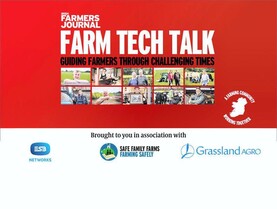The second week of August has always been a challenging time for beef finishers.
Increases in supply are regularly seen and with supply and demand so finely balanced, it doesn’t take much to tip the balance.
The 30-month age limit also plays into the factories' hands at this time of year.
Cattle born in February or March 2019 are approaching that milestone, meaning there is pressure to get such cattle killed under the 30-month barrier to maximise bonuses.
Cool the jets
Throw in the fact that factory feedlot buyers are getting set to head for the rings again and you see why factories want to cool the jets a little ahead of the peak autumn store buying period.
The move to pull prices comes as the kill for the week ending 30 July hit the highest level so far this year at just over 34,000.
Within this, the bullock kill increased by just over 2,000 head and this is likely putting pressure on prime cattle prices.
Bord Bia has forecast a 110,000 head drop in the Irish cattle kill for 2021 compared with 2020.
The Irish cattle kill to 30 July this year is currently 64,642 head behind last year.
Bullock prices
Bullocks have started off this week at €4.15/kg to €4.20/kg, which is back 5c/kg in some factories.
A lot of bullocks being killed early this week were purchased last week at €4.20/kg to €4.25/kg, but factories are signalling that they will be moving to €4.15/kg to €4.20/kg from early this week.
Heifer prices have also received a cut, with some factories back 5c to10c/kg at €4.20/kg. Others are still paying €4.25/kg in deals completed last week.
British trade
The move to cut prices here flies in the face of what is happening in Britain, where, after a period of levelling off, beef prices have started to edge upwards in the last two weeks.
R4L steers showed a further improvement last week to hit €5.16/kg including VAT.
Prices in Northern Ireland are also steady, with deals being completed at over €5/kg for heifers. The demand for cull cows is also extremely strong.
Also of note, sterling has strengthened in recent days to hit its strongest point against the euro since February 2020.
This means that British customers are in a stronger position to purchase Irish beef this week, yet the Irish trade has gone in the opposite direction.
Beef prices across some of our main EU export markets also remain strong.
Cow trade
The cow trade remains steady, with R grading cows still hitting €3.85/kg to €3.90/kg and U grading cows making 5c to 10c/kg more.
O grading cows are also still strong, with €3.70/kg to €3.75/kg being paid for well-fleshed cows. P grading cows are back at €3.60/kg to €3.65/kg.
Wholesalers have kept a floor under the cow price, with the mainstream factories not being able to exert as much control over the cow price as they have done with the bullock and heifer prices.
The mart trade is also the market of choice for many farmers, with small numbers taking more cows out of the system. Many of these well-fleshed young cows are being exported to Northern Ireland.






 This is a subscriber-only article
This is a subscriber-only article











SHARING OPTIONS: